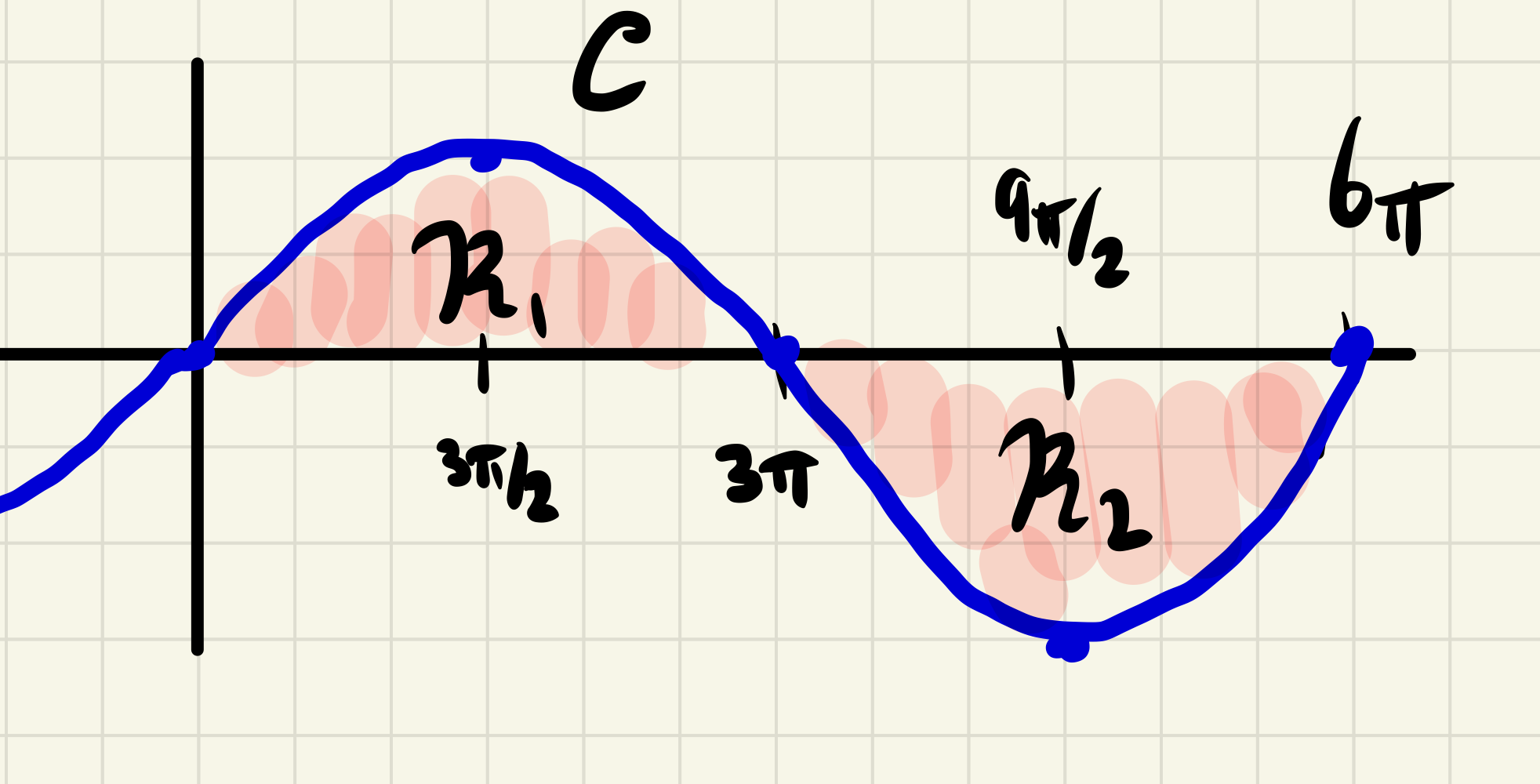Let \(F\) be an antiderivative of \(f\) on \(I=[a,b]\text{.}\) Since \(f\) is continuous on \(I\text{,}\) we see that \(F\) is differentiable on \(I\) and its derivative \(F'=f\) is continuous. The mean value theorem thus applies to \(F\text{:}\) given any interval \([c,d]\) on which \(F'\) is defined and continuous, there is an element \(x^*\in[c,d]\) such that
\begin{equation*}
F'(x^*)=\frac{F(d)-F(c)}{d-c}\text{.}
\end{equation*}
We use this fact to produce a sequence of pointed partitions \(P_n\) of a very particular sort. Namely for each \(n\text{,}\) we divide \([a,b]\) into \(n\) equal subintervals of length \(\Delta x=(b-a)/n\text{,}\) and for each subinterval \(I_k=[x_{k_1},x_k]\) we choose our sample input \(c_k\) to be a point where we have
\begin{equation*}
F'(c_k)=\frac{F(x_k)-F(x_{k-1})}{x_k-x_{k-1}}=\frac{F(x_k)-F(x_{k-1})}{\Delta x}\text{.}
\end{equation*}
As discussed above, such a \(c_k\) is guaranteed to exist by the mean value theorem. Since \(F'=f\) by assumption, these sample points satisfy
\begin{equation}
f(c_k)=\frac{F(x_k)-F(x_{k-1})}{\Delta x}\text{.}\tag{1.5.4}
\end{equation}
Note that we have \(\lVert P_n\rVert=\Delta x=(b-a)/n\text{,}\) and thus \(\lVert P_n\rVert\to\infty\text{.}\) It follows that if \(S_n\) is the Riemann sum corresponding to the pointed partition \(P_n\text{,}\) then
\begin{equation*}
\int_a^b f(x)\, dx=\lim_{n\to\infty}S_n\text{.}
\end{equation*}
We now compute \(S_n\) for any fixed \(n\text{:}\)
\begin{align*}
S_n \amp =\sum_{k=1}^nf(c_k)\Delta x\\
\amp = \sum_{k=1}\left( \frac{F(x_k)-F(x_{k-1})}{\Delta x}\right)\Delta x \amp \knowl{./knowl/xref/eq_FTC_II_proof.html}{\text{(1.5.4)}}\\
\amp =\sum_{k=1}^n F(x_k)-F(x_{k-1}) \\
\amp =(\cancel{F(x_1)}-F(x_0))+(\cancel{F(x_2)}-\cancel{F(x_1)}+\cdots (F(x_n)-\cancel{F(x_{n-1}})\\
\amp =F(x_n)-F(x_0)\\
\amp =F(b)-F(a)\text{.}
\end{align*}
We’ve shown that \(S_n=F(b)-F(a)\) for all \(n\text{.}\) It follows that
\begin{equation*}
\int_a^b f(x)\, dx=\lim_{n\to\infty}S_n=\lim_{n\to\infty}F(b)-F(a)=F(b)-F(a)\text{,}
\end{equation*}
as desired.


